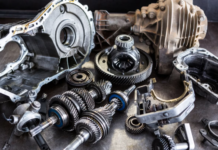In the fast-paced world of manufacturing and logistics, efficiency can make or break a business. Consider a busy factory floor, where workers are hustling to keep up with the demands of production. Amidst this frenzy, case packers stand out as unsung heroes, ensuring that products are packed swiftly and correctly. The significance of these machines lies not only in their ability to streamline operations but also in reducing labor costs and minimizing errors. This article delves into the intricacies of case packers and their vital role in the carton loading process.
Understanding Case Packers
Case packers are automated systems designed to package products into cases or cartons efficiently. They come in various forms, from vertical and horizontal designs to robotic systems. The primary function of these machines is to take individual products from a production line and organize them into a predetermined case configuration. This automation is crucial in high-demand industries, such as food and beverage, pharmaceuticals, and consumer goods. By utilizing case packers, companies can significantly enhance their throughput and maintain consistent quality in packaging.
The evolution of case packers has been influenced by the growing need for speed and accuracy in production lines. Modern designs incorporate advanced technologies, such as sensors and vision systems, which allow the machines to detect product dimensions and ensure proper placement within the cases. This level of precision minimizes waste and optimizes the use of packaging materials, further contributing to overall efficiency. As businesses strive to meet consumer demands, investing in case packers becomes a strategic move that can yield substantial returns.
Benefits of Automation in Packaging
The introduction of automation in packaging, particularly through the use of case packers, has transformed the industry landscape. One of the most significant benefits is the reduction of labor costs. Automated systems can operate continuously, requiring fewer human interventions. This shift not only lowers operational expenses but also reduces the risk of human error, which can lead to costly product recalls and customer dissatisfaction.
Moreover, case packers enhance production speed. In contrast to manual packing, which is prone to delays and variability, automated systems ensure a consistent output rate. This reliability is crucial for companies aiming to scale their operations and meet market demands. The integration of case packers into production lines allows businesses to focus on other critical areas, such as product development and customer service, ultimately driving growth and profitability.
The Carton Loading Process Explained
Carton loading is a critical step in the packaging process, directly impacting the efficiency of distribution. This stage involves organizing products into cartons in a manner that optimizes space and protects the items during transit. With the introduction of automated systems, such as case packers, the carton loading process has become more streamlined and efficient. These machines ensure that products are loaded correctly and securely, reducing the risk of damage during transportation.
The importance of effective carton loading cannot be overstated. Properly loaded cartons maximize space utilization in shipping containers and warehouses, which translates to lower transportation costs. Furthermore, efficient loading practices help maintain product integrity, ensuring that items reach their destination in optimal condition. As companies continue to seek ways to enhance their supply chain efficiency, the role of case packers in automating carton loading becomes increasingly vital.
Innovations in Case Packing Technology
The future of case packers and carton loading is bright, driven by continuous innovations in technology. Recent advancements include the integration of artificial intelligence and machine learning, enabling these systems to adapt to varying product types and sizes without extensive reconfiguration. This flexibility allows businesses to respond quickly to changing market demands and consumer preferences.
Additionally, the use of collaborative robots, or cobots, is on the rise in packaging environments. These machines work alongside human operators, enhancing productivity while maintaining safety. The synergy between humans and case packers creates a more efficient workflow, where operators can focus on complex tasks while the machines handle repetitive packing functions.
As technology continues to evolve, companies that embrace these innovations will not only improve their operational efficiency but also gain a competitive edge in the marketplace. The integration of advanced case packers into carton loading processes represents a significant step forward in achieving streamlined production and distribution.
Conclusion
The significance of case packers in the carton loading process cannot be overlooked. These automated systems play a crucial role in enhancing efficiency, reducing costs, and ensuring product quality. As businesses navigate the complexities of modern manufacturing and logistics, investing in advanced packing technology becomes essential. By embracing innovations in case packers, companies can optimize their operations and better meet consumer demands.




